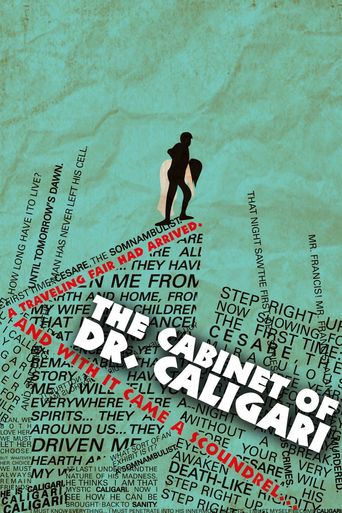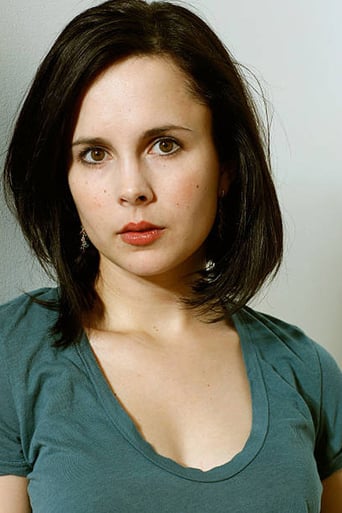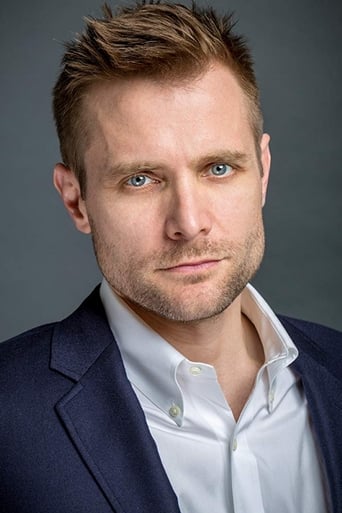The Cabinet of Dr. Caligari (2005)
Remake of Das Cabinet des Dr. Caligari (1920). Shot entirely on green screen. Some exact shots from the 1920 film were superimposed to properly replicate the original. Francis relates the story of traveling magician Dr. Caligari and Cesare. Their arrival in a town coincides with savage killings.
Watch Trailer
Cast


Reviews
Around eight years ago when «Batman Begins» was released, I wrote that in future releases we would finally «know why Daffy Duck is mean, learn of the dysfunctional family of Charlie Brown, or discover the psychological traumas suffered by Olive Oyl in her youth», due to the tendency of some filmmakers to explain everything and, in these cases, to turn icons of American pop culture into celluloid «human beings». I did not know that also in 2005, a few months later, David Lee Fisher had released his remake of the German Expressionistic classic, «Das Kabinett des Doktor Caligari» (1919), directed by Robert Wiene. I have finally seen it and I can assert that, if there is a clear illustration of that fixation, that wrecks propositions and turns them into a mishmash palatable to the minimum common denominator, it is «The Cabinet of Dr. Caligari» (2005). Nothing could be farther than this from the intentions of the German filmmakers in early 20th century. As it is outlined in Fisher's new adaptation, the protagonist, Francis (played by Judson Pearce Morgan, with trite tics and annoying manias learned from the Method), constantly blocks the flow of his own subjective world, as it was proposed by Expressionism. Francis spends the whole film trying to find explanations to everything, taken from Psychology 101, a habit that perhaps he acquired from his work in the field of statistics, as he tells his best friend Alan. In the Expressionist subjectivity there are elements of irrationality, but in this exasperating rereading they have no place: Francis resists to open his heart and mind to them, to passion and excess, and above anything he fails to recognize (as suggested by her «beloved» Jane) the strong homo-erotic content in his relation with Alan. However, if there is an elemental opportunity that Fisher lost, almost a century after the release of Wiene's film, was to stick to the tale of that demented summer in Holstenwall and suppress the explanatory frame that producer Erich Pommer imposed, to «tame» the original story by Carl Mayer and Hans Janowitz. But even in this form, Wiene's original went along with Caligari's and all the other characters' madness, submerged in a distorted and oblique world, without the abundant close-ups that have been added to this retelling, following the so-called «zero degree style» of filmmaking. In this explanatory strategy in cinema, many American filmmakers have chosen to believe that their products, enunciated in the particular way Americans speak English language, will be accepted, when what really happens is that these works are self-betraying concoctions that evidence a lazy vulgarity that makes no effort to enrich the films with the understanding of diversity. Everything is uniformed by common ways of American culture (which, obviously, is fine and correct to the average American), to make everything seem as «American as apple pie», be it a vampire story in Romania, of Mayan chiefs in Yucatán or German folks in Holstenwall. The people in this village rent tents in their yearly town fair in dollars, and they relax their t's as if they had their mouths full of peanut butter. This «Americanization» of the Other has become so common, that most spectators no longer question it. It may be fine for entertainment or for stories about Americans, but for those who, perhaps as Fisher, pretend to make art and tell stories in foreign places, many results are cheap, coarse, and ugly. In this line of thought, it seems logical that research of the «Expressionist acting method» was not considered too seriously by anyone in the cast. In particular, this affected badly a key character of the story: the somnambulist Cesare. From the terrifying and virile creation Conrad Veidt made in the original, we were left with Doug Jones' Cesare that, sorry to say, reminded me of Polly Bergen, as if she had had a very bad day, with a cheap wig and make-up. In the end one has to admit that this «Cabinet» was, above anything else, a technical exercise in which contemporary actors were skilfully placed among the Expressionist sets creates in 1919 by Walter Röhring, Hermann Warm and Walter Reinamm, whose names do not appear in the credits, and the roles of production designer and art director are taken by two persons whose work must have been quite limited. On the artistic side, the exercise had no impact. If anything distinguishes the 1919 film is that it inaugurated the horror film, that it set a trend in fantastic cinema. and that in terms of lightning, composition and design it had an influence beyond the obvious genres (horror and film noir), that still manifests in some films, not always with good results. As in this one.
I have just finished watching The Cabinet of Dr. Caligari. Why this film has not won more awards and is not better known, is beyond me! This film, when one considers its technical achievements alone, is a milestone in ingenuity. In its handling of the concepts of the original film, it is a heartfelt homage. In its re-imagining of the original film, it is chilling. As one who normally doesn't like re-makes, I have got to say, "I love this film and will watch it over and over again!" Kudos to the director for making a great film that any fan of the original German expressionist film should love. Thank you David Lee Fisher! Kudos to Daamen Krall for bringing a palpable villainy to Dr. Caligari. While watching the film, the voice of Caligari reminded me of Vincent Price. A voice of gentle yet refined menace. Kudos to Doug Jones with his masterful performance of Cesare! His performance rivaled that of Conrad Veidt. Everyone involved in this film is to be congratulated on a work masterfully crafted and acted! Thank you.
Great fun to see this old film re-worked. Daamen Krall as Dr. Caligary is excellent. He's creepy, manipulative and sensitive, all at once. By sensitive, I mean you can see his wheels turn. He's a very, very interesting actor, and matched the stylization of this film. Mr. Krall's turn around at the end is also very well executed. The director took on a great task re-working this film, and for the most part, he succeeds. The technical blending of the old and new is nearly imperceptible. However, at times, the dialogue and acting of some of the second leads takes on a very 21st Century twist, which throws off the "feel" of the film. Neil Hopkins is very handsome, and I like to see more of him (in other things), but he was guilty of throwing off this film with his contemporary style.
This movie was excellent. The acting was great. Dr. Caligari was the best, I want to see him in more movies. I hope it wins at scream fest. Did anyone else see it? What did you think? I did not see the original but, now I want to. Daamen Krall is a superb actor, has anybody ever heard of him before. I took my boys to see it, and they loved it too. It was pretty creepy though. The man in the cabinet was spooky, the way his eyes looked. I was disappointed though that the only African American person in this movie was the first to be murdered. Why is it always the African Americans are murdered first? I liked how after the film, you could ask questions for the cast and crew of the film.







